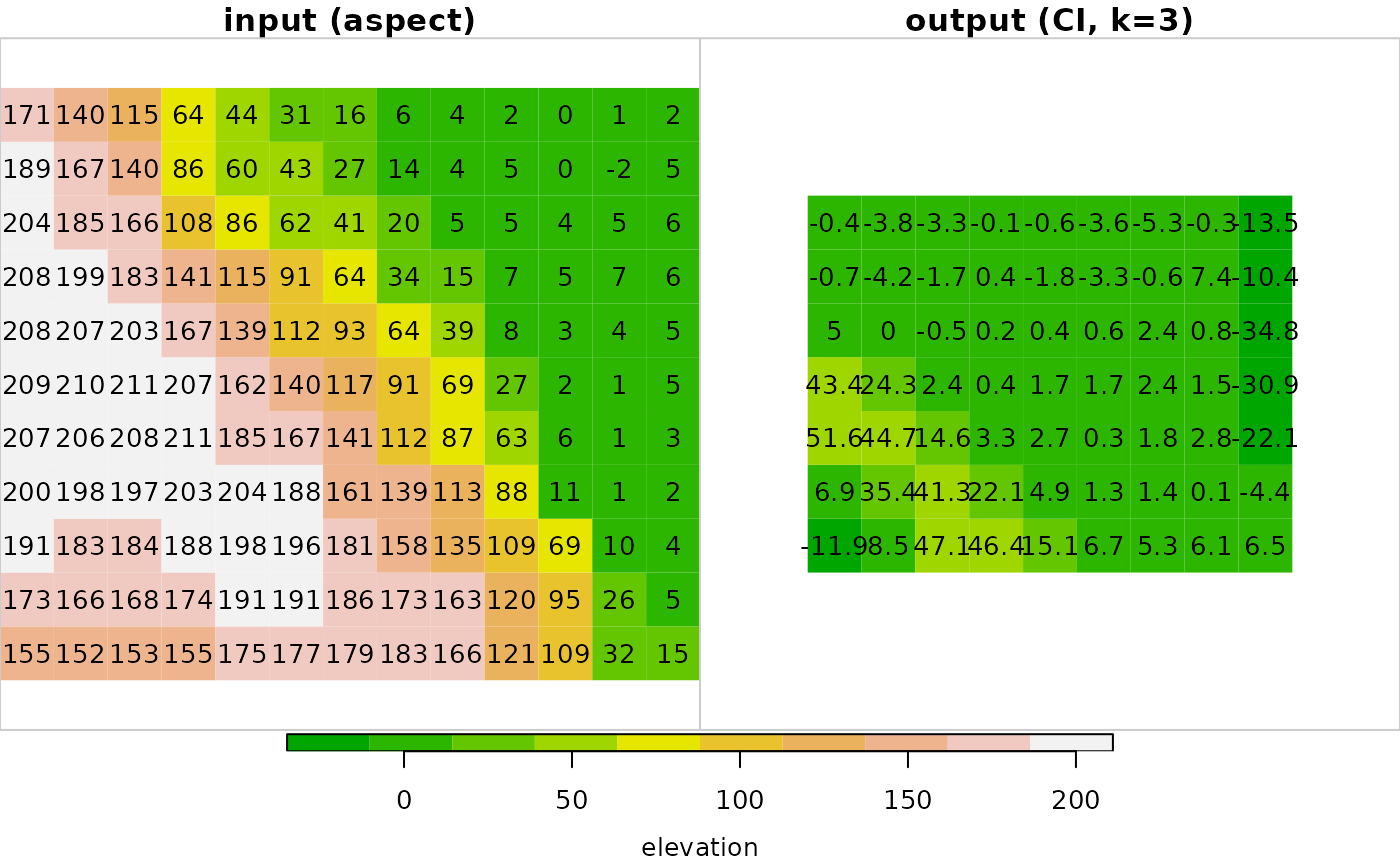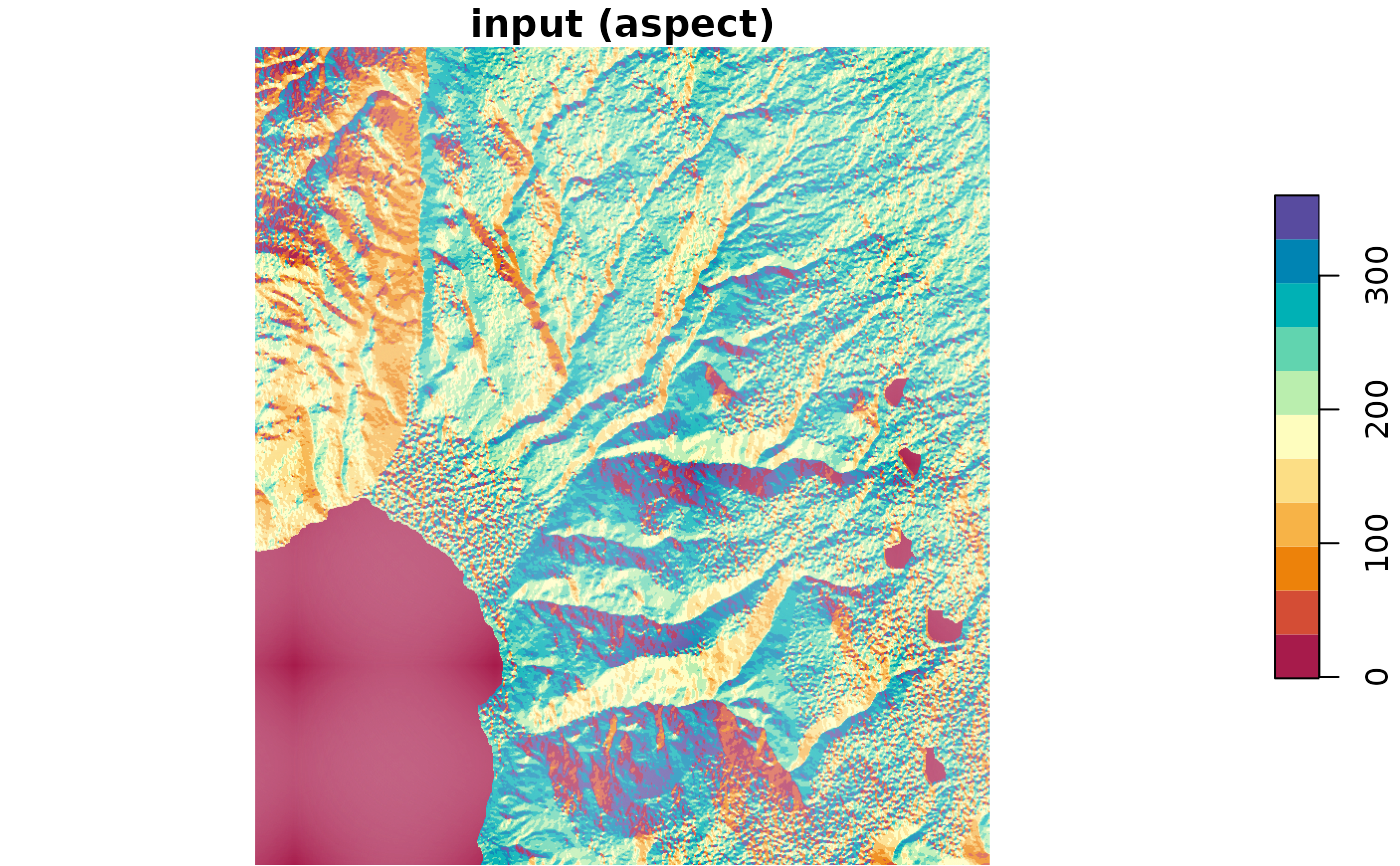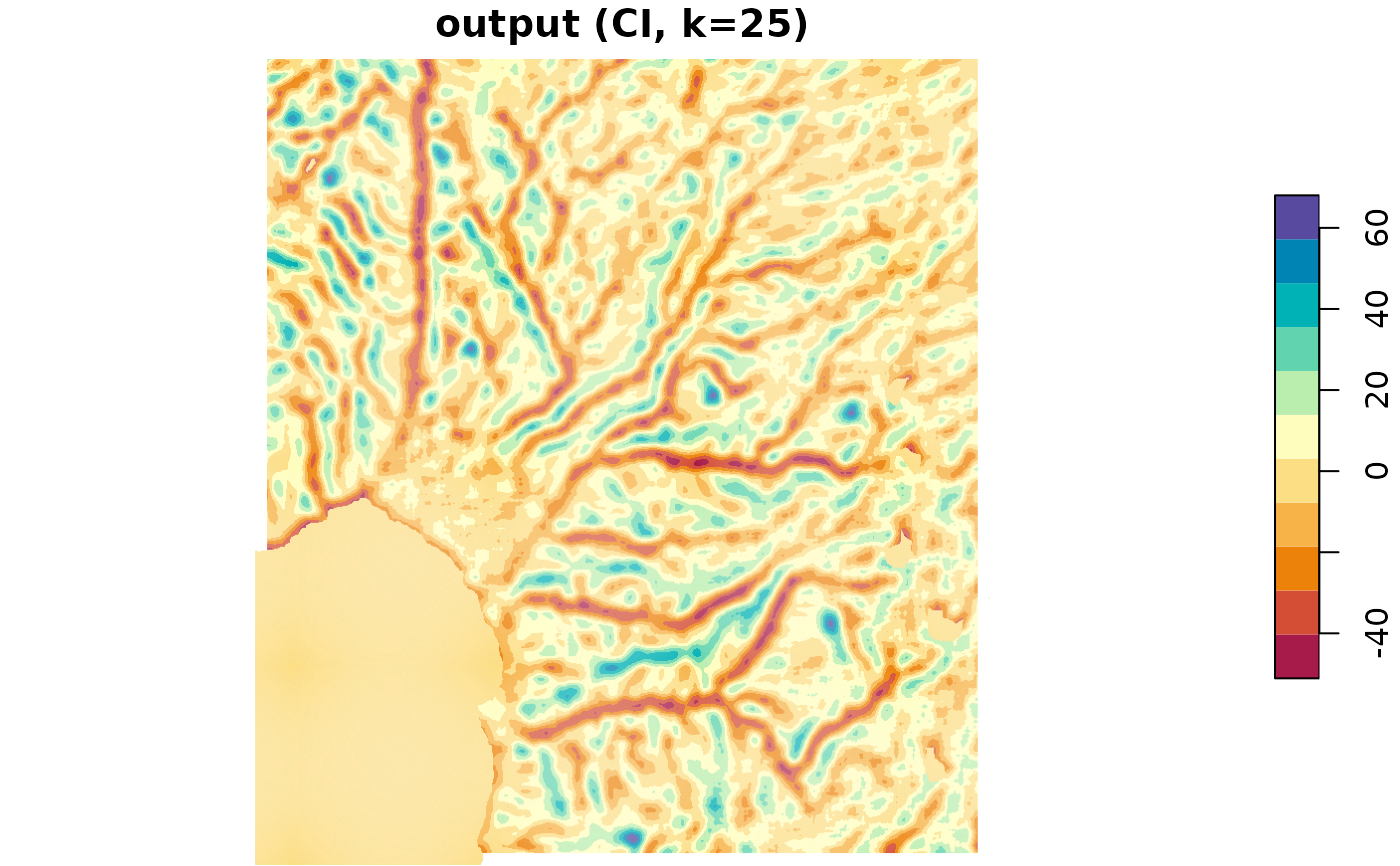Calculates the Convergence Index (CI) given a topographic slope raster. Input and output are rasters of class stars, single-band (i.e., only `"x"` and `"y"` dimensions), with one attribute.
CI(x, k, na.rm = FALSE, na_flag = -9999)Arguments
- x
A raster (class
stars) with two dimensions:xandy, i.e., a single-band raster, representing aspect in decimal degrees clockwise from north, possibly including-1to specify flat terrain, such as returned by functionaspect.- k
k Neighborhood size around focal cell. Must be an odd number. For example,
k=3implies a 3*3 neighborhood.- na.rm
Should
NAvalues be ignored when calculating CI? Default isFALSE, i.e., when at least one aspect value in the neighborhood isNAthe CI is also set toNA.- na_flag
Value used to mark
NAvalues in C code. This should be set to a value which is guaranteed to be absent from the input rasterx(default is-9999).
Value
A stars raster with CI values.
Note
The raster is "padded" with (k-1)/2 more rows and columns of NA values on all sides, so that the neighborhood of the outermost rows and columns is still a complete neighborhood. Those rows and columns are removed from the final result before returning it.
Aspect values of -1, specifying flat terrain, are assigned with a CI value of 0 regardless of their neighboring values.
References
The Convergence Index algorithm is described in:
Thommeret, N., Bailly, J. S., & Puech, C. (2010). Extraction of thalweg networks from DTMs: application to badlands.
Examples
# Small example
data(dem)
dem_asp = aspect(dem)
dem_ci = CI(dem_asp, k = 3)
r = c(dem, round(dem_ci, 1), along = 3)
r = st_set_dimensions(r, 3, values = c("input (aspect)", "output (CI, k=3)"))
plot(r, text_values = TRUE, breaks = "equal", col = terrain.colors(10), mfrow = c(1, 2))
 # \donttest{
# Larger example
data(golan)
golan_asp = aspect(golan)
golan_ci = CI(golan_asp, k = 25)
plot(golan_asp, breaks = "equal", col = hcl.colors(11, "Spectral"), main = "input (aspect)")
# \donttest{
# Larger example
data(golan)
golan_asp = aspect(golan)
golan_ci = CI(golan_asp, k = 25)
plot(golan_asp, breaks = "equal", col = hcl.colors(11, "Spectral"), main = "input (aspect)")
 plot(golan_ci, breaks = "equal", col = hcl.colors(11, "Spectral"), main = "output (CI, k=25)")
plot(golan_ci, breaks = "equal", col = hcl.colors(11, "Spectral"), main = "output (CI, k=25)")
 # }
# }